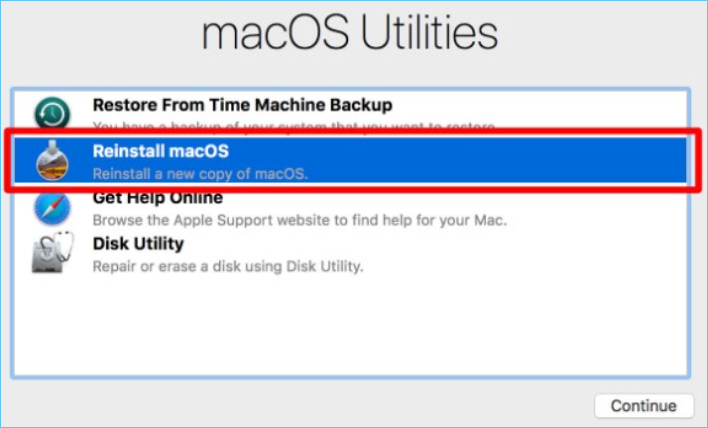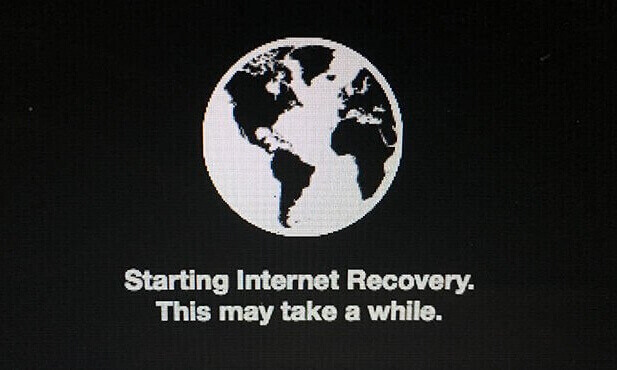Start Your Free Trial!
Sign up to our newsletter, stay updated on news and exclusive offers from EaseUS. Don't worry, if you change your mind, you can unsubscribe at any time, free of charge. We value your privacy (Privacy Policy).
Reinstalling macOS is usually the next step if your Mac experiences a severe problem that regular troubleshooting cannot resolve. You can choose to reinstall macOS without losing data, as opposed to deleting the internal storage and installing macOS from scratch. Let's learn about how to complete it.

You might wish to reinstall macOS for a few reasons. Maybe your Mac is acting wrongly, or you want to remove any possible mistake due to previous installation updates. Don't forget to ask yourself will reinstalling macOS deletes files. Thus, reinstallation of the Mac operating system could solve the problems.
Firstly, getting rid of potentially corrupted files is the most obvious reason. Update installations might occasionally corrupt files. You might have to reinstall macOS to fix the issues if this occurs and try to recover lost files after the macOS update.
Another reason is that if you intend to sell your Mac, you might also decide to reinstall macOS. Considering your privacy safety, force delete Mac and reinstalling the operating system can prepare the device for the following user.

An upgrade or reinstall your macOS is necessary due to your Mac's poor performance or a hardware issue. Many users are worried that if they reinstall the operating system, they may lose all of their data. Here are two methods for you to fix this problem. Before that, you'd better back up your important data and files with EaseUS data recovery software to avoid unnecessary data loss:

Back Up Your Mac and Never Lose Data
Back up and restore your MacBook/iMac without Time Machine, iCloud, or external hard drives.
Before reinstallation, if you had backed up your Mac, you might have retrieved your data from an external hard drive or another location, such as iCloud storage, which depends on how you had done it.
Suppose you haven't made any backups of your Mac. In that case, you'll need the expert Mac data recovery software tool, EaseUS Data Recovery Wizard for Mac, to quickly recover deleted files on Mac during a macOS reinstallation with the use of this tool.
Following the steps below will help you recover lost data utilizing EaseUS Data Recovery for Mac if you run into an issue with data loss after the macOS reinstallation.
Step 1. Search for lost files
Select the disk location to search for lost files (it can be an internal HDD/SSD or a removable storage device) on macOS Sierra, High Sierra, Mojave, Catalina, Big Sur, Monterey, Ventura, and the latest Sonoma. Click the "Search for lost files" button.

Step 2. Go through the scanning results
EaseUS Data Recovery Wizard for Mac will immediately scan your selected disk volume and display the scanning results.

Step 3. Select the file(s) and recover
In the scan results, select the file(s) to preview and click the "Recover" button to have them back.

Reinstalling macOS can launch macOS Recovery, your Mac's built-in recovery system. Here is a video for your reference to reinstall macOS on different devices.
You may easily reinstall the macOS or restore your current OS using the Recovery Mode on your Mac. To enter the Recovery mode, press the "Command" and "R" buttons simultaneously during startup until you hear the startup bell and see an Apple logo. Here are the complete steps:
Step 1. Restart your Mac device.
Step 2. Press and hold the Command and R keys while your computer restarts. Once you see the Apple logo on your screen, release them.

Step 3. Choose "Reinstall macOS" from the tools window in macOS Recovery.

Step 4. Then click "Continue" and follow the instructions on the screen.
Step 5. After clicking "Agree", select your hard disk in the next window.
Step 6. Click Install to get your macOS reinstallation started.

However, we may need to reinstall a macOS to perform hardware or software troubleshooting or reinstall the same macOS system on numerous devices simultaneously. In this case, you may install the macOS from USB. If you have no idea how to download macOS to USB and create a macOS installer, you can try EaseUS Data Recovery Wizard for Mac, this might be the best approach.
1. A removable USB flash drive is at least 15 GB in size.
2. Ensure the USB drive doesn't contain vital information before we erase it.
3. Mac admin rights are required.
4. In case something goes wrong, a backup of files.
Step 1. Select macOS installer
Launch EaseUS Data Recovery Wizard for Mac and click "macOS Installer" on the left side. In tab 1, unfold the macOS version list by clicking "Select macOS intaller". You can also select "Refresh" button after downloading the macOS installer from App Store.
You can download macOS installer to upgrade or downgrade macOS, and you can find all the available versions, no matter the latest or older versions. Morever, you can apply macOS installer to dual boot Mac and run two macOS together.

Step 2. Format the USB flash drive
Connect a USB flash drive (larger than 16 GB) to the Mac as your macOS boot drive. Choose the USB drive you prepared in tab 2 and click the "Erase and create" option in the pop-up window to format your USB flash drive. Then click the "Create macOS installer" button to start the creating.

Step 3. Create the macOS installer boot drive
Click the "Finish" button after the macOS installer creating is finished. Follow the prompts on the interface to perform subsequent installation operations.

The option to choose your USB drive as a startup disk should now be available. When you select it, your computer will boot from your USB drive into macOS Recovery and display the installer for macOS on your screen.
If a higher version of macOS is causing your Mac to run slowly, you can reinstall it by learning how to get old versions of macOS. A Mac device typically uses the OS that was pre-installed on the device when you bought it or later versions.
Step 1. Check to see if the macOS or Mac OS X version you want to install is compatible with your Mac.
Step 2. Then download the installer for the Mac OS X or macOS version you choose to install.
Step 3. After downloading the installer, your Mac will be installed or degraded when you click to install it.
Please note that you may delete your data before installing an older version of macOS.
To reinstall your macOS, you can choose to perform it without losing any of your data. You can also delete the internal storage and reinstall macOS from scratch. No matter your choice, you might pay attention to protecting your data security by making a backup plan or recovering your data in time. EaseUS Data Recovery Wizard for Mac can be your good helper.
Here are 4 questions that you might be interested in. Check here for the answers.
1. How do I reinstall my Mac completely?
Before Monterey, you had to either make a bootable USB device or utilize Recovery Mode to wipe your disk completely. With Monterey, Apple has made it simple to obtain a brand-new installation. You can restore your Mac to its default settings with Monterey's System Preferences menu.
2. How do I reinstall macOS from a USB drive?
3. How long does it take to reinstall macOS?
Installing in place is faster than totally wiping your computer and starting over. It will probably take no more than 45 minutes.
4. How to reinstall macOS without Internet?
Even without an online connection, you may reinstall macOS by creating a bootable installer with a USB device.
Was This Page Helpful?
Jaden is one of the editors of EaseUS, who focuses on topics concerning PCs and Mac data recovery. Jaden is committed to enhancing professional IT knowledge and writing abilities. She is always keen on new and intelligent products.
Related Articles
How to Fix User Profile Cannot Be Loaded in Windows?
![]() Daisy/Jan 24, 2025
Daisy/Jan 24, 2025
How to Fix a Software Update Is Required to Use This Startup Disk
![]() Jaden/Feb 25, 2025
Jaden/Feb 25, 2025
7 Solutions to Fix Unmountable Boot Volume Windows 10/8/7
![]() Tracy King/Feb 14, 2025
Tracy King/Feb 14, 2025
Will System Recovery Delete My Files? Answered Here!
![]() Jean/Jan 24, 2025
Jean/Jan 24, 2025
CHOOSE YOUR REGION
Start Your Free Trial!
Sign up to our newsletter, stay updated on news and exclusive offers from EaseUS. Don't worry, if you change your mind, you can unsubscribe at any time, free of charge. We value your privacy (Privacy Policy).
Start Your Free Trial!
Sign up to our newsletter, stay updated on news and exclusive offers from EaseUS. Don't worry, if you change your mind, you can unsubscribe at any time, free of charge. We value your privacy (Privacy Policy).